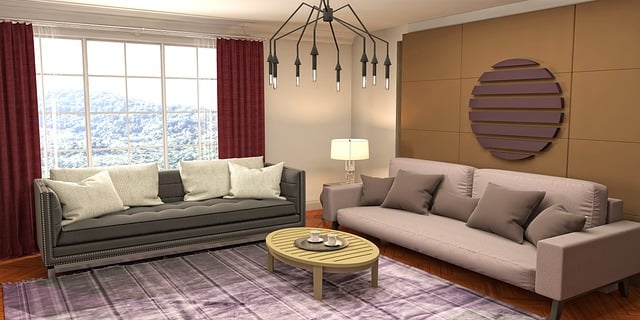In today's digital era, 3D walkthroughs and flythroughs are transforming interior space planning by offering immersive experiences. They enhance understanding of designs, facilitate client-designer communication, enable informed decision-making, and streamline project timelines with early issue identification. These technologies boost client engagement, foster trust, and lead to more satisfying outcomes for both designers and clients in the digital landscape.
In today’s digital era, 3D walkthroughs and flythroughs are transforming how we experience and interact with design. This article explores the revolutionary impact of these immersive technologies on interior space planning. We delve into how 3D walkthroughs enhance client engagement, facilitate better spatial understanding, and streamline design communication. By creating realistic virtual environments, designers can now offer clients a dynamic, first-hand look at their future spaces, revolutionizing the way we envision and plan interior spaces.
Revolutionizing Interior Space Planning with 3D Walkthroughs
In today’s digital era, 3D walkthroughs and flythroughs are transforming the way we perceive and interact with interior spaces. They offer a revolutionary approach to interior space planning, enabling clients to experience designs in a fully immersive manner. Unlike traditional 2D plans and renderings, these dynamic virtual tours allow users to navigate through a space as if they were actually there, providing a deeper understanding of the layout, proportions, and ambiance.
This technology empowers design professionals to showcase their creations effectively, fostering better communication with clients. By virtually walking through a space, clients can make more informed decisions about aesthetics, functionality, and personal preferences. Moreover, 3D walkthroughs streamline the planning process by identifying potential issues or inefficiencies early on, leading to cost savings and faster project timelines.
Client Engagement: Immersive Experiences Unlocked
Client engagement is significantly enhanced with 3D walkthroughs and flythroughs, providing a unique and immersive experience that goes beyond traditional 2D plans. These advanced technologies allow clients to virtually explore an interior space planning before construction even begins, fostering a deeper connection between the design concept and its future occupants.
With 3D walkthroughs, clients can navigate through every corner of a proposed design, interacting with virtual elements and visualizing their potential impact. Flythroughs further elevate this experience by offering a cinematic view, allowing users to immerse themselves in the space and truly grasp the flow and ambiance of the interior. This level of engagement not only builds trust but also enables informed decision-making during the planning phase, ensuring client satisfaction throughout the project’s lifecycle.
Flythroughs: The Future of Visual Communication in Design
Flythroughs are transforming how designers communicate their visions, particularly in the realm of interior space planning. These immersive 3D walkthroughs allow clients to experience a design concept as if they were there, enhancing understanding and sparking emotional responses. By visualizing spaces in a dynamic, three-dimensional format, flythroughs offer a level of clarity and engagement that static images and floor plans can’t match.
In today’s digital era, the use of advanced visualization tools is becoming integral to the design process. Flythrough technology enables designers to showcase intricate details, material choices, and lighting effects, providing clients with a comprehensive view of the final product. This not only facilitates better decision-making but also fosters client trust and involvement in the creative process, ultimately leading to more satisfying outcomes for both parties.
Creating Realistic Virtual Environments for Better Planning
Creating immersive 3D walkthroughs and flythroughs allows clients to experience spaces virtually, enhancing decision-making for interior space planning. These realistic virtual environments offer a detailed, three-dimensional view of proposed designs, enabling clients to visualize layouts, furniture placements, and material choices more clearly. This technology goes beyond traditional 2D plans by providing a dynamic, interactive experience that helps identify potential issues early in the design process.
For interior space planning, 3D walkthroughs can simulate various scenarios, such as different lighting conditions, furniture arrangements, or even hypothetical modifications. This level of realism facilitates better understanding and communication between designers and clients, leading to more informed decisions and reduced revision cycles. By leveraging these virtual tools, the planning process becomes more efficient, accurate, and aligned with client expectations.
3D walkthroughs and flythroughs are transforming the way we experience and plan interior spaces. By providing immersive, realistic virtual environments, these technologies offer a revolutionary approach to client engagement and space planning. As design professionals embrace digital advancements, 3D walkthroughs become essential tools for showcasing design concepts, facilitating client communication, and ultimately enhancing the overall project experience. With their ability to unlock new levels of engagement and precision, 3D walkthroughs and flythroughs are poised to define the future of interior space planning.
